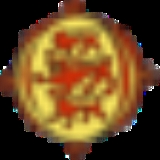
Battle of Ihtiman
Encyclopedia
The Battle of Ihtiman occurred in 1355 between Bulgarians
and Ottomans and resulted in Ottoman victory. The exact location is not known, but in an anonymous Bulgarian chronicle, it is mentioned that the armies of Michail Asen engaged the invading forces before they could reach Sofia
.
seized their first fortress in the Balkans
in 1352, they quickly became to expand their territory in Europe
. From the year 1354, their raiding parties began looting in Bulgarian Thrace
, ravaging the regions of Plovdiv
and Stara Zagora
, and in the following year launched a campaign against the key city of Sofia.
, Michail Asen, summoned an army to stop the advancing enemy. The battle was fierce, the Bulgarians suffered heavy casualties and their commander and heir to the throne was killed. However, the Ottoman losses were also heavy and they were unable to continue their march to Sofia.
Bulgarians
The Bulgarians are a South Slavic nation and ethnic group native to Bulgaria and neighbouring regions. Emigration has resulted in immigrant communities in a number of other countries.-History and ethnogenesis:...
and Ottomans and resulted in Ottoman victory. The exact location is not known, but in an anonymous Bulgarian chronicle, it is mentioned that the armies of Michail Asen engaged the invading forces before they could reach Sofia
Sofia
Sofia is the capital and largest city of Bulgaria and the 12th largest city in the European Union with a population of 1.27 million people. It is located in western Bulgaria, at the foot of Mount Vitosha and approximately at the centre of the Balkan Peninsula.Prehistoric settlements were excavated...
.
Origins of the conflict
After the Ottoman TurksOttoman Turks
The Ottoman Turks were the Turkish-speaking population of the Ottoman Empire who formed the base of the state's military and ruling classes. Reliable information about the early history of Ottoman Turks is scarce, but they take their Turkish name, Osmanlı , from the house of Osman I The Ottoman...
seized their first fortress in the Balkans
Balkans
The Balkans is a geopolitical and cultural region of southeastern Europe...
in 1352, they quickly became to expand their territory in Europe
Europe
Europe is, by convention, one of the world's seven continents. Comprising the westernmost peninsula of Eurasia, Europe is generally 'divided' from Asia to its east by the watershed divides of the Ural and Caucasus Mountains, the Ural River, the Caspian and Black Seas, and the waterways connecting...
. From the year 1354, their raiding parties began looting in Bulgarian Thrace
Thrace
Thrace is a historical and geographic area in southeast Europe. As a geographical concept, Thrace designates a region bounded by the Balkan Mountains on the north, Rhodope Mountains and the Aegean Sea on the south, and by the Black Sea and the Sea of Marmara on the east...
, ravaging the regions of Plovdiv
Plovdiv
Plovdiv is the second-largest city in Bulgaria after Sofia with a population of 338,153 inhabitants according to Census 2011. Plovdiv's history spans some 6,000 years, with traces of a Neolithic settlement dating to roughly 4000 BC; it is one of the oldest cities in Europe...
and Stara Zagora
Stara Zagora
Stara Zagora is the sixth largest city in Bulgaria, and a nationally important economic center. Located in Southern Bulgaria, it is the administrative capital of the homonymous Stara Zagora Province...
, and in the following year launched a campaign against the key city of Sofia.
The battle
The son of the Bulgarian Emperor Ivan AlexanderIvan Alexander of Bulgaria
Ivan Alexander , also known as John Alexander, ruled as Emperor of Bulgaria from 1331 to 1371, during the Second Bulgarian Empire. The date of his birth is unknown. He died on February 17, 1371. The long reign of Ivan Alexander is considered a transitional period in Bulgarian medieval history...
, Michail Asen, summoned an army to stop the advancing enemy. The battle was fierce, the Bulgarians suffered heavy casualties and their commander and heir to the throne was killed. However, the Ottoman losses were also heavy and they were unable to continue their march to Sofia.

